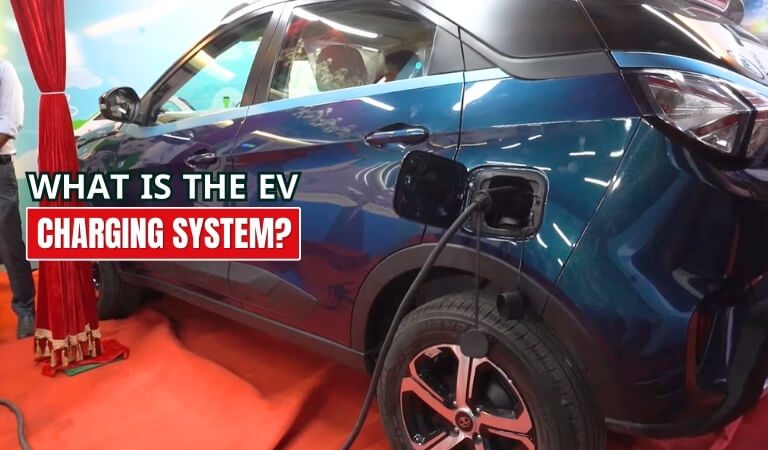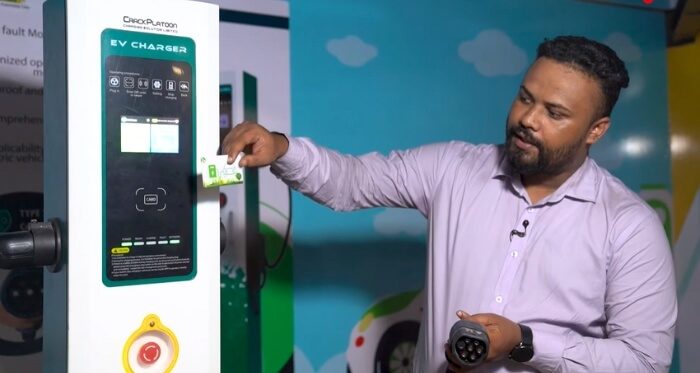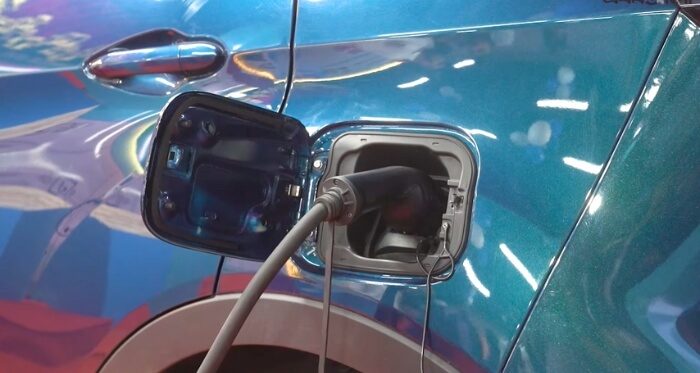Electric vehicles (EVs) have changed the way we travel and also introduced an eco-friendly powering system. People around the world are still getting used to the new power system of electric vehicles. However, before you understand an EV charging system, you need to know how an EV charger works.
Let’s take the level 2 AC charging station to explain the scenario. The station is basically connected to the electric grid that supplies the energy. When an EV is plugged into that station, it flows energy in 240 volts and 11kw per hour. Then it will take 3 hours to charge an EV with having battery capacity of 33 kWh.
Well, the charging system consists of a network of outlets that recharge the batteries of electric vehicles and plug-in hybrids. Although it’s a new system, the good news is that a wide range of charging solutions are available within your reach. These solutions range from convenient wall-mounted units for residential use to high-capacity fast-charging stations for commercial and public use.
We’re not done here; there’s more about CrackPlatoon’s EV charging systems you should know about. To understand how these systems work and how it’s changing the face of the way using fuel for your vehicle you should keep on reading.
Historical Origin of Electric Vehicles
Electric vehicles, often known as EVs, have a story that takes us back over a hundred years. It’s a tale of early inventors and their quest for a cleaner travel method. Back in the 1800s, some creative minds in Europe and the United States started playing with the idea of battery-powered cars.
The first attempts were basic but opened up a new world of possibilities. As batteries improved towards the end of that century, electric cars became more promising. They were especially liked in cities for being smooth to drive and not polluting the air.
However, when the 1900s rolled in, electric cars took a backseat as the cheaper, gas-powered cars like the famous Ford Model T were introduced. These new cars could go further without needing a refill, which made them more appealing. This change meant that electric cars became less common, but the early work done on them set the stage for their comeback today, driven by modern technology and a desire to protect our environment.
What is the EV Charging System?
Electric Vehicles have introduced a new way of transportation, and they offer an eco-friendly alternative powering method to traditional fuel-powered cars. The credit goes to the modern technology that fostered electrical power charging systems also known as EV chargers.

An EV charger is a device that provides the necessary power to recharge the batteries of an electrical vehicle. It converts electrical power into a form of energy to power the EV batteries that can be stored and used. There are various types of EV chargers, both simple home chargers and complex fast-charging units found in public spaces. Each class offers different charging speeds and capabilities, with the user’s needs in mind.
The EV charging system consists of a network of charging units, including both private and public stations. These infrastructures are designed to ensure smooth charging for EVs. While private stations can only be used by a group of users, public stations are designed to capacitate a large number of EV users.
Furthermore, you should know the EV charging system is still growing and people are still getting used to it. So, finding an EV charging station isn’t as easy as finding a fuel/gas pump to replenish your vehicle. However, if you are in Bangladesh and have an EV then you don’t need to worry at all, with the Crackplatoon app, you can find the nearest EV Charging Station location.
How Does an EV Charging System Work?
As you know, electric vehicles depend on the charging system to keep their batteries powered. This system is vital for the operation and convenience of EVs. As a user, you should understand how the EV charging system works.
In simple terms, the EV charging system works by transferring the power from a specific power source to the car’s battery. It uses a charger, which converts AC power from the grid into DC power that the battery can store. The process varies in speed and efficiency, depending on the type of charger used, ranging from slower home chargers to faster public stations.
The charger communicates with the EV to ensure a safe and efficient charging process. It adjusts the power flow based on the battery’s condition and capacity. This smart interaction safeguards the battery’s longevity and optimizes the charging time, making it a seamless experience for EV users.
Features That Make the EV Charging System Reliable
As time passes, people are diverting towards more eco-friendly choices, which leads to using electric vehicles. A reliable charging system is crucial when it comes to electric cars.

The CrackPlatoon is such a service; that is marked as a reliable EV charger supplier in Bangladesh. It has different useful features that make it truly dependable. Here are the key features that make the CrackPlatoon Charging system trustworthy:
Easy to Use
The user-friendly nature of EV charging systems has a certain appeal to them. These systems are designed with simplicity in mind, which allows users to charge their vehicles without any technical expertise. This system has clear instructions and intuitive interfaces to ensure that even first-time users can easily operate the system.
Additionally, the universal connectors and systematic procedures across most stations eliminate confusion, making EV charging as straightforward as refueling a traditional car.
Safety Features
The safety of electric vehicle charging systems is of the utmost importance. Well, the CrackPlatoon EV charging systems are equipped with multiple layers of protection to prevent electrical hazards and ensure secure connections.
As soon as there is a problem, the automated system cuts off the power supply, monitoring the charging process. This proactive approach to safety minimizes risks, providing peace of mind for users.
Compatibility
EV charging stations must be compatible with different types of electric vehicle charging systems so that they can charge different cars at the same time. There is a wide range of models and makes supported by most chargers, so every EV user can benefit from them. The universal design approach encourages EV adoption since drivers are not restricted to particular chargers for their vehicle types.
Smart App Control
The CrackPlatoon CSL app allows EV charging systems to be customized by integrating intelligent apps into the charging process, which adds comfort and flexibility.
As a result of these apps, users are able to monitor the status of their battery, schedule recharging times, as well as locate nearby charging stations in their area. The ability to remotely control and track the charging process enhances the user experience, making it more efficient and user-friendly.
High-Speed Charging Capabilities
High-speed charging capabilities are a game-changer in the EV industry. These chargers drastically reduce charging time, making EVs more practical for long-distance travel. This rapid charging technology is continually evolving, with newer models offering even faster speeds, reducing downtime and enhancing the overall appeal of electric vehicles.
Intelligent Monitoring
Intelligent monitoring systems in EV chargers ensure efficient energy usage and battery health. They track various parameters like charging speed, temperature, and battery status, adjusting the process for optimal performance. This smart management not only prolongs battery life but also contributes to energy conservation.
The reliability of the EV charging system is a cumulative result of its user-friendly design, safety measures, universal compatibility, smart controls, rapid charging, and intelligent monitoring. These features collectively ensure that EVs are not just an eco-friendly option, but also a convenient and practical choice for modern transportation.
The Methods of Charging the Electric Vehicle
Charging an electric vehicle (EV) is a significant aspect of its operation, dictating its usability and convenience. As EVs gain popularity, understanding the various methods of charging becomes essential. These methods cater to different needs, offering flexibility and efficiency in maintaining an EV’s power.

Level 1 Charging: Slow Charging
Level 1 charging, also known as slow charging, is the most basic form of EV charging. It utilizes a standard 120-volt AC outlet, the kind found in most homes. This method is ideal for overnight charging, as it replenishes about 2 to 5 miles of range per hour. Although it’s slower than other methods, its accessibility makes it a convenient option for daily commuters with regular driving patterns.
This charging method doesn’t require any special equipment beyond the charging cord provided with the vehicle. This ease of use makes it a popular choice for first-time EV owners. It’s a practical solution for those who can charge their car for an extended period, such as overnight at home.
Level 2 Charging: Fast Charging
Level 2 charging offers a quicker charging solution compared to Level 1. It uses a 240-volt AC power supply, similar to what large appliances like dryers use. This method can charge an EV battery from empty to full in just a few hours, making it suitable for home and public charging stations.
Level 2 chargers are often installed in homes, workplaces, and public areas due to their faster charging capabilities. This type of charging is ideal for EV owners who need a quicker turnaround. It’s also a popular choice in commercial settings, providing a significant boost in range in a short amount of time.
DC Fast Charging: Rapid Charging
DC Fast Charging represents the quickest method available for charging EVs. It uses direct current (DC) instead of alternating current (AC), enabling much faster charging speeds. This method can add 60 to 100 miles of range in just 20 minutes, ideal for long-distance travel.
However, not all EVs are capable of utilizing DC Fast Charging due to its high power demand. These chargers are commonly found along highways and in areas where quick charging is necessary. They are a game-changer for long road trips, significantly reducing the time spent charging.
The charging methods of an electric vehicle differ in speed and convenience, catering to different needs and lifestyles. From the slow but accessible Level 1 charging to the rapid and efficient DC Fast Charging, these methods provide EV owners with a range of options. To maximize the benefits of EV ownership and ensure a seamless electric driving experience, understanding these methods is key.
The Future Outlook of the EV Charging System
The evolution of the EV charging system is integral to the widespread adoption of electric vehicles. As we look towards the future, several developments are set to redefine how we charge our EVs. These advancements aim to enhance efficiency, accessibility, and overall user experience.
- Increased Charging Speed: Future charging systems will drastically reduce charging times, making EVs as convenient as traditional cars. This will enable quicker turnaround for drivers, especially on long journeys.
- Wireless Charging Technology: The introduction of wireless, or inductive, charging will eliminate the need for cables and plugs. This technology will allow for seamless charging at parking spots, reducing hassle for users.
- Greater Accessibility: Expansion of charging infrastructure is expected, especially in urban and remote areas. This will ensure EV owners have reliable access to charging facilities, regardless of their location.
- Smart Charging Networks: Integration with smart grids will allow EV charging to be more energy-efficient and cost-effective. Charging can be optimized based on energy demand and supply, benefiting both consumers and utility providers.
- Vehicle-to-Grid (V2G) Systems: V2G technology will enable EVs to supply power back to the grid. This could provide additional energy storage options and stabilize energy networks during peak times.
- Solar-Powered Charging Stations: Emphasis on renewable energy sources will lead to more solar-powered EV charging stations. These stations will provide a greener charging option, further reducing the carbon footprint of EVs.
The future of EV charging systems looks bright and innovative, with a focus on speed, convenience, and sustainability. These advancements will not only enhance the EV experience but also contribute significantly to the global shift towards cleaner and more sustainable transportation.
Final Thoughts
The EV charging system, the pivotal component of electric vehicles, has been examined comprehensively in this article. It is a necessity to understand what is the EV charging system in our modern transportation. This is more than a charging network. It symbolizes sustainable mobility.
Different charging methods, such as Level 1, Level 2, and DC Fast Charging, are suited to different needs. Future advancements may include faster charging speeds, wireless technology, and solar-powered stations.
From historical origins to future prospects, this journey highlights the value of innovation. A seamless, efficient, and eco-friendly driving experience depends on the evolution of electric vehicle charging systems.
